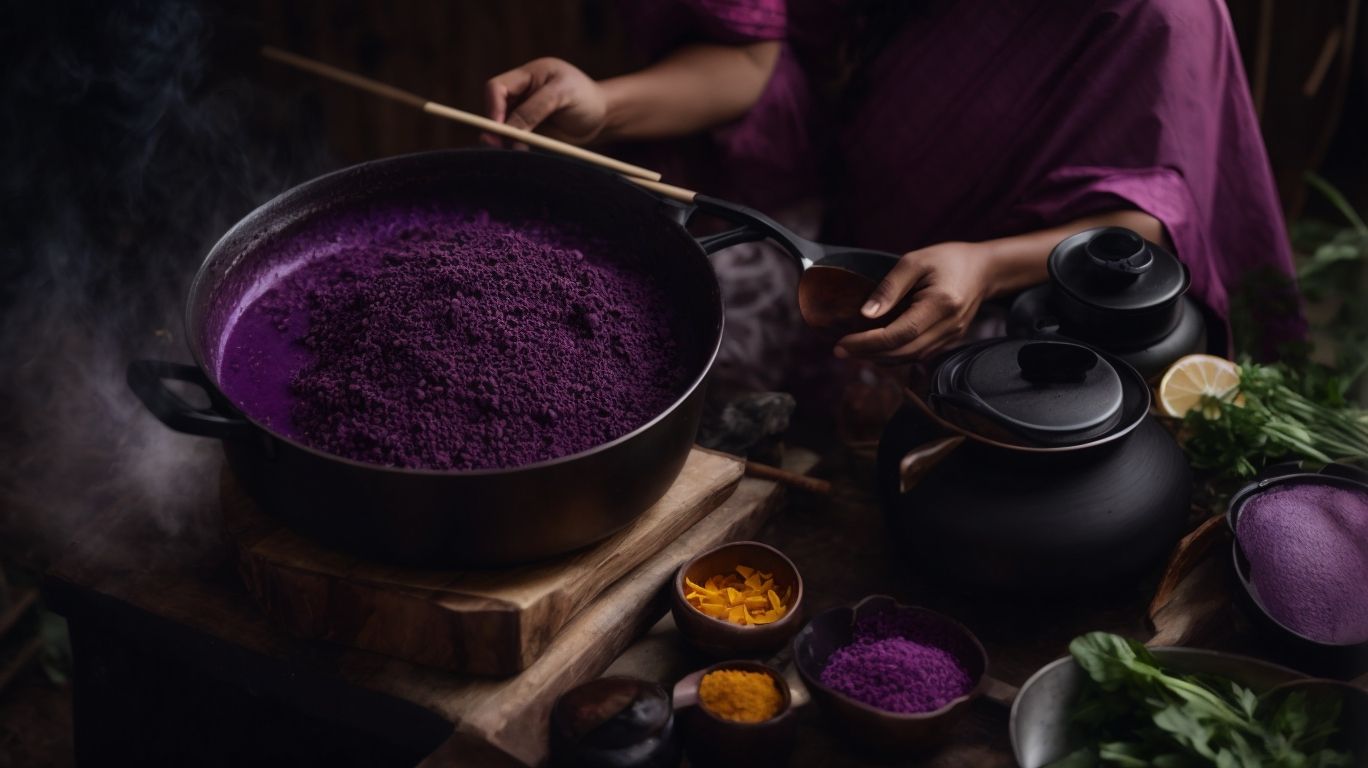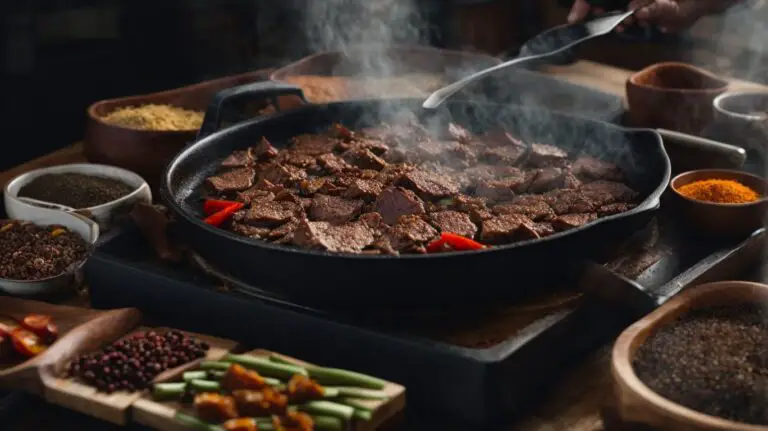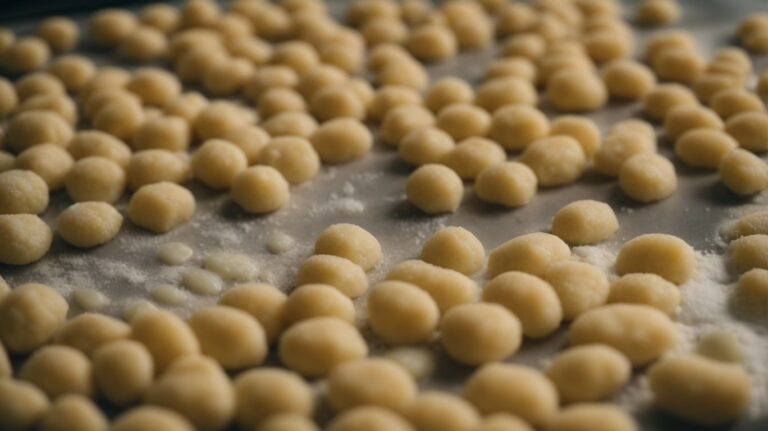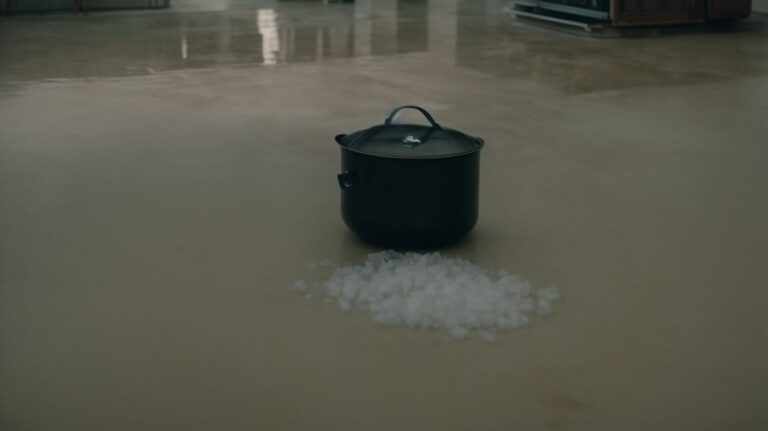How to Cook Ube Halaya Without Coconut Milk?
Are you looking to try a new and delicious Filipino dessert?
Look no further than Ube Halaya!
We will explore what exactly Ube Halaya is, why you should consider cooking it without coconut milk, the ingredients needed for this recipe, step-by-step instructions on how to cook it, and tips on how to serve and store this delightful treat.
Learn how to make this creamy and flavorful dessert that will surely impress your taste buds.
Key Takeaways:
What is Ube Halaya?
Ube Halaya, a popular Filipino dessert, is a sweet and vibrant purple yam jam that is commonly made at home.
Originating from the Philippines, Ube Halaya holds a special place in Filipino culinary culture, showcasing the unique flavor and color of the purple yam.
- boiling and mashing the purple yam,
- mixing it with condensed milk, sugar, and butter,
- and continuously stirring the mixture until it thickens into a smooth jam-like consistency.
This luscious dessert is often served during festive occasions and gatherings, symbolizing tradition, warmth, and hospitality in Filipino homes.
Why Cook Ube Halaya Without Coconut Milk?
Cooking Ube Halaya without coconut milk offers a unique twist to the traditional recipe, providing a different flavor profile and texture.
By eliminating coconut milk, the Ube Halaya gains a lighter and more subtly sweet taste, allowing the earthy notes of the purple yam to shine through prominently. This modification also tends to result in a smoother and creamier consistency, enhancing the overall indulgence of the dessert. The absence of coconut milk often makes the dessert more suitable for individuals who prefer a less rich or less tropical taste.
What Ingredients Do You Need to Cook Ube Halaya Without Coconut Milk?
To prepare Ube Halaya without coconut milk, you will need key ingredients such as ube, evaporated milk, condensed milk, butter, and sugar.
The ube is the star ingredient here, providing the signature vibrant purple color and distinct flavor. It’s important to select fresh, high-quality ube for the best results.
The evaporated milk adds a creamy texture and richness, while the condensed milk brings sweetness to balance the earthy tones of the ube.
Butter adds a luxurious mouthfeel and enhances the overall richness, and sugar is crucial for sweetness.
Ube
Ube, also known as purple yam, is the primary ingredient in Ube Halaya, adding its distinct color and flavor to the dessert.
Using fresh or grated ube is crucial in creating a rich and vibrant Ube Halaya. Fresh ube offers a more intense flavor and a smoother texture compared to using powdered versions. When preparing fresh ube, start by washing the tubers thoroughly, peeling them, and then grating or mashing them. Preparing the ube may take some time, but the effort is worth it for the authentic taste it brings to the dessert.
When selecting your ube, opt for ones that are firm, free from soft spots, and have a deep purple color. The tubers should feel heavy for their size, indicating they are fresh and full of moisture, which contributes to a creamy consistency in the final dish. If fresh ube is not available, high-quality frozen grated ube can also be a good alternative.
Evaporated Milk
Evaporated milk is a crucial ingredient in cooking Ube Halaya, known for its creamy texture and ability to enhance the richness of the dessert.
When added to Ube Halaya, evaporated milk not only amplifies its velvety consistency but also imparts a distinct sweetness and depth of flavor. The concentrated form of milk brings a luscious mouthfeel and a slightly caramelized note to the dish, balancing the natural earthiness of purple yam. Choosing the right evaporated milk involves opting for a brand with a rich, creamy texture and a slightly sweet profile to complement the Ube Halaya’s overall taste. This ensures a harmonious blend of flavors and a decadent dessert experience.
Condensed Milk
Condensed milk, with its sweet and creamy consistency, plays a key part in sweetening and enriching the flavor of Ube Halaya.
Its high sugar content not only adds a delightful sweetness but also contributes to the smooth and luscious texture of the dessert. When gradually heated with the vibrant purple ube (purple yam) paste, the magical combination of flavors and colors comes to life.
Integrating condensed milk into your Ube Halaya is a crucial step that should be approached with care. Make sure to stir it gently into the mixture to maintain the luscious consistency and avoid any lumps. This process is where the indulgent sweetness and richness of the dish truly come together.
Butter
Butter is an essential ingredient in Ube Halaya, contributing to its richness and imparting a delicious flavor to the dessert.
When making Ube Halaya, the choice of butter can greatly influence the final result. Opting for high-quality unsalted butter ensures a pure flavor that complements the natural sweetness of the purple yam. The luxurious texture of butter also adds a smooth and creamy consistency to the dessert, making each bite incredibly indulgent.
To maximize the flavor profile of your Ube Halaya, consider using European-style butter with a higher butterfat content for a richer taste. Allowing the butter to reach room temperature before incorporating it into the dish ensures even distribution and easier blending with other ingredients.
Sugar
Sugar acts as a primary sweetener in Ube Halaya, balancing the flavors and adding the perfect amount of sweetness to the dessert.
It plays a crucial role in enhancing the natural nutty and earthy notes of the ube, a purple yam that gives this traditional Filipino dessert its distinctive color and taste.
Through caramelization, sugar enriches the overall creamy texture of the halaya, creating a luscious mouthfeel that melts in your mouth. Sugar not only provides sweetness but also helps in preserving the halaya, extending its shelf life for longer enjoyment.
To adjust the sweetness based on personal preference, you can gradually add sugar while continuously tasting the mixture until it reaches your desired level of sweetness.
How to Cook Ube Halaya Without Coconut Milk?
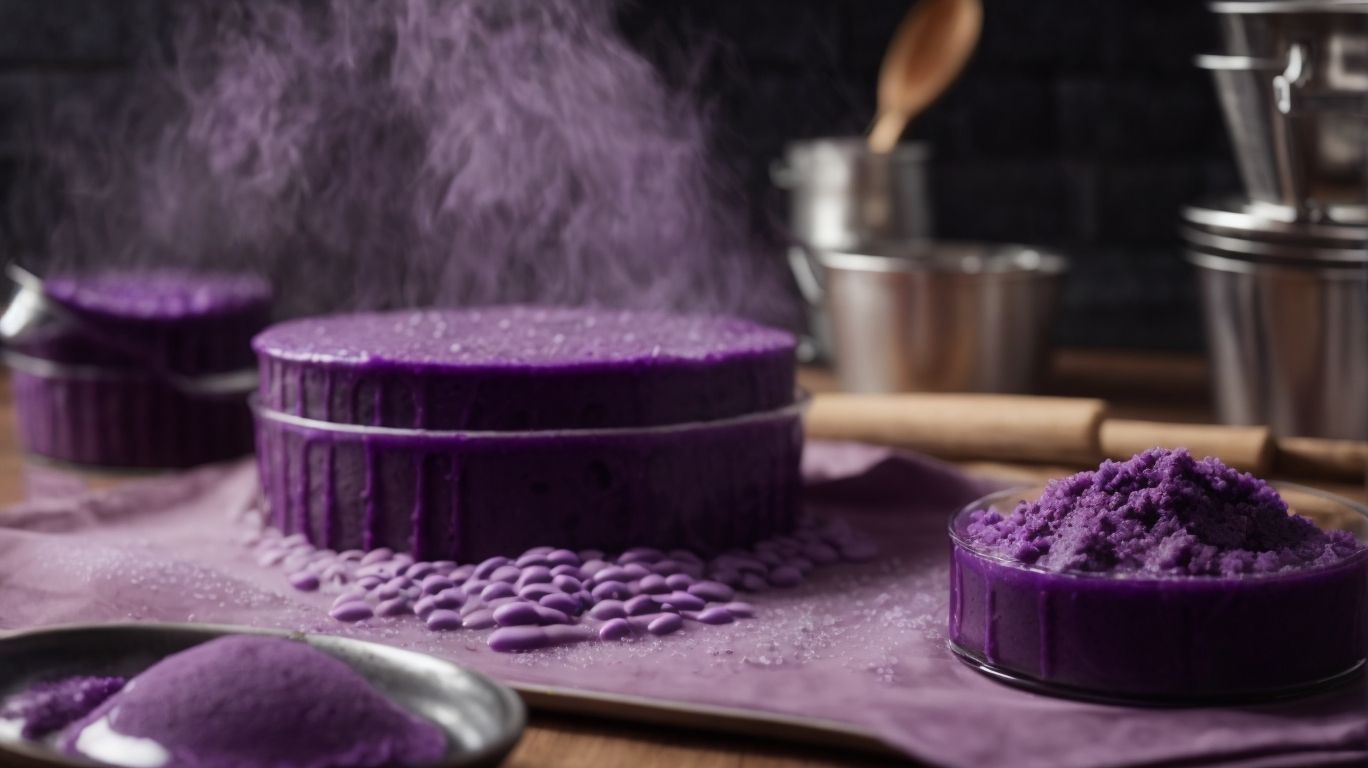
Credits: Poormet.Com – Douglas Adams
Cooking Ube Halaya without coconut milk involves a series of steps that include preparing the ube, boiling and mashing it, and combining it with the other ingredients.
Once you have peeled and diced the ube, boiling and mashing it is a crucial step to achieve that smooth, creamy texture that is characteristic of this Filipino dessert. As you mash the ube, ensure a consistent and thorough mash to avoid lumps in the final product. When combining it with the other ingredients like condensed milk and sugar, gentle stirring is essential to blend all the flavors together. Adding a touch of salt can help enhance the overall taste and balance the sweetness.
Prepare the Ube
To begin making Ube Halaya, the ube needs to be peeled, boiled until tender, and then mashed to achieve the desired consistency.
“
Peeling the ube is a crucial step in this process. Start by washing the ube thoroughly to remove any dirt or debris. Using a sharp knife, carefully peel off the skin, ensuring to remove all the outer layer.
- Once peeled, cut the ube into uniform pieces to ensure even cooking.
- Boil the peeled and chopped ube in water until it becomes tender.
- After boiling, drain the excess water and let the ube cool before mashing it using a fork or a potato masher.
These steps are essential to achieve a smooth and creamy Ube Halaya, packed with that distinct ube flavor.
Boil the Ube
Boiling the ube until tender is a critical step in preparing Ube Halaya, as it softens the yam for easy mashing and blending with other ingredients.
The key to achieving the perfect level of tenderness when boiling ube lies in selecting uniform-sized pieces to ensure even cooking. It’s recommended to boil the ube over medium heat, allowing it to simmer gently rather than rapidly boiling, which may cause the yam to become mushy on the outside while remaining firm inside. Typically, boiling the ube for around 20-30 minutes should suffice, but the cooking time may vary depending on the size and freshness of the yam. To test for doneness, insert a fork or knife into the ube – it should easily pierce through, indicating that it’s properly softened.
Mash the Ube
Mashing the boiled ube is essential to achieve a smooth texture and consistent consistency in Ube Halaya, ensuring even blending with the other ingredients.
When mashing the ube, it is crucial to aim for a creamy and lump-free consistency. This will result in a velvety, luxurious Ube Halaya that melts in your mouth. To achieve this texture, you can use a potato masher, food processor, or even a blender. The goal is to break down the cooked ube into a fine paste without any chunks remaining. Take your time during this step to ensure thorough mashing for the best results.
Cook the Ube Mixture
Cooking the Ube mixture involves blending the mashed yam with other ingredients over low heat, allowing the flavors to meld and the mixture to thicken.
When preparing the Ube Halaya, it is essential to blend the vibrant purple yam with sweetened condensed milk, coconut milk, and sugar until a homogeneous mixture is attained. This blending process should be carried out meticulously to ensure that there are no lumps and the texture remains velvety smooth. Gentle stirring and constant attention are key to achieving this consistency.
Once the ingredients are combined, the mixture is simmered on low heat, occasionally stirring to prevent scorching at the bottom of the pan. This simmering process allows the flavors to intensify and the Ube Halaya to thicken to the desired creamy consistency. Patience during this stage is crucial, as gradual cooking ensures a rich and luscious final product.
Add the Evaporated Milk
Adding evaporated milk to the Ube mixture enhances its creaminess and richness, elevating the overall texture and flavor profile of Ube Halaya.
To successfully incorporate evaporated milk into the Ube mixture, start by simmering the Ube in coconut milk until it’s thickened. Then, gradually pour the evaporated milk while continuously stirring to ensure a smooth consistency. The evaporated milk contributes to the dessert’s velvety texture, making it indulgently creamy. It also adds a subtle sweetness and depth of flavor that complements the nutty notes of the Ube. For optimal results, use full-fat evaporated milk for a richer taste and ensure it is well blended into the mixture.
Add the Condensed Milk
The addition of condensed milk to the Ube mixture imparts sweetness and creaminess, balancing the flavors and enhancing the dessert’s overall taste.
When incorporating condensed milk into the Ube mixture, it is important to do so gradually, tasting along the way to control the sweetness levels effectively. The condensed milk not only sweetens the dish but also contributes to its velvety texture, creating a luscious and rich mouthfeel.
To manage the sweetness, consider adjusting the amount of sugar or other sweeteners used in the recipe to complement the sweetness from the condensed milk. This careful balance ensures that the dessert is not overly sugary but harmoniously sweetened.
Add the Butter
Incorporating butter into the Ube mixture enriches the dessert with a luxurious richness and imparts a delightful flavor profile to Ube Halaya.
When adding butter to Ube Halaya, you introduce a velvety texture that enhances the overall mouthfeel of the dish. The butter plays a crucial role in balancing the natural sweetness of the Ube, creating a harmonious blend of flavors. To effectively melt and incorporate butter into the mixture, it’s essential to ensure the butter is at room temperature. This allows for easier blending and ensures a smooth consistency throughout the dessert. Gently stirring the melted butter into the Ube paste helps distribute the richness evenly, resulting in a luscious and indulgent final product.
Add the Sugar
The addition of sugar to the Ube mixture balances the flavors, enhances the sweetness, and contributes to the overall taste profile of the dessert.
When incorporating sugar into the Ube Halaya, it not only adds sweetness but also helps to meld together the different components of the dish. The sugar aids in bringing out the natural flavors of the Ube root while providing a rich and indulgent taste. The amount of sugar used can be adjusted to suit individual preferences, whether one prefers a more pronounced sweetness or a subtler touch. By carefully managing the sugar levels, it allows for a customizable experience that caters to various palates.
Cook Until Thickened
Cooking the Ube mixture until thickened is crucial to achieve the desired consistency and texture in Ube Halaya, ensuring a perfect balance of flavors and creaminess.
When simmering the Ube mixture, patience is key. Allow the mixture to gradually thicken as it cooks, stirring occasionally to prevent burning or sticking to the pan. The ideal consistency to aim for in Ube Halaya is a thick, spreadable texture that holds its shape when scooped. To monitor the thickness, use a spoon to check how the mixture coats the back of it – it should leave a visible trail without running off immediately. If the Ube is too runny, continue cooking to evaporate more moisture; if it’s too thick, a touch of coconut milk can help achieve the perfect consistency.
How to Serve and Store Ube Halaya Without Coconut Milk?
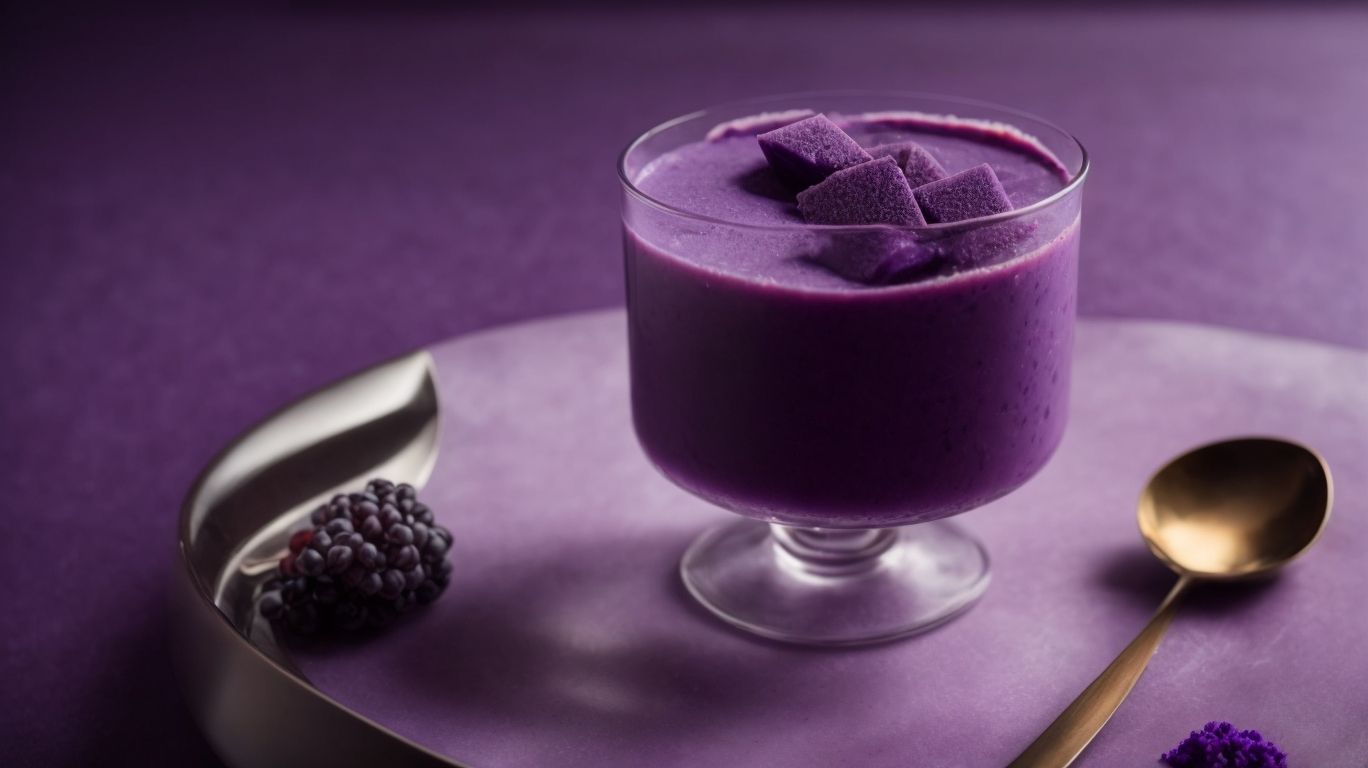
Credits: Poormet.Com – Noah Martinez
Serving Ube Halaya without coconut milk can be done elegantly in small dessert bowls or jars, and storing it properly ensures its freshness and flavor for an extended period.
When presenting this delectable Filipino dessert, consider garnishing it with a sprinkle of toasted crushed nuts for added texture and flavor contrast. You can also top it off with a dollop of whipped cream or a scoop of vanilla ice cream to elevate its indulgence. For storage, transfer the Ube Halaya into an airtight container and keep it refrigerated; this will help maintain its richness and prevent any spoilage. Consider using glass jars or sealed Tupperware for individual portions to enhance the visual appeal and make serving more convenient.
Serving Suggestions
When serving Ube Halaya, consider presenting it in decorative dessert bowls or jars to enhance its visual appeal and create a delightful culinary experience.
For an added touch of elegance, you can sprinkle some toasted coconut flakes on top of the Ube Halaya. This not only adds a contrasting texture but also a tropical flavor that complements the sweetness of the dessert.
Another creative way to serve Ube Halaya is by layering it with whipped cream in small parfait glasses to create a visually appealing dessert parfait. The layers of purple Ube and white cream provide a striking color contrast that is sure to impress your guests.
Storage Tips
To maintain the freshness and flavor of Ube Halaya, store it in airtight containers in the refrigerator, ensuring proper sealing for extended shelf life.
By storing Ube Halaya correctly, you can preserve its rich color and taste for a longer period. Airtight containers are crucial as they prevent exposure to air and moisture, which can cause the dessert to spoil quickly. Refrigeration plays a key role in maintaining the texture and quality of the Ube Halaya, as the cool temperature helps to slow down the degradation process. It’s recommended to consume the dessert within a week for the best flavor and consistency, although properly stored Ube Halaya can last up to two weeks.
Frequently Asked Questions
1. Can I cook ube halaya without using coconut milk?
Yes, you can definitely cook ube halaya without using coconut milk. There are alternative ingredients that you can use to achieve the same creamy and delicious texture of traditional ube halaya.
2. What can I use instead of coconut milk when making ube halaya?
You can use alternative ingredients such as evaporated milk, condensed milk, or almond milk to replace coconut milk in your ube halaya recipe. Each of these options will give a slightly different flavor, so feel free to experiment and find your favorite.
3. Is ube halaya still considered authentic without coconut milk?
Authenticity is subjective and can vary depending on personal preferences and cultural traditions. While coconut milk is a common ingredient in traditional ube halaya recipes, using alternative ingredients does not make it any less authentic. The most important factor is that the end result is delicious and satisfies your cravings for ube halaya.
4. Can I make vegan-friendly ube halaya without coconut milk?
Yes, you can make a vegan-friendly version of ube halaya without coconut milk. As mentioned before, you can use alternative non-dairy milk options or experiment with ingredients like silken tofu or cashews to achieve a creamy texture.
5. How does using alternative ingredients affect the taste of ube halaya?
Using alternative ingredients like evaporated milk or almond milk may affect the overall taste of your ube halaya. For example, using condensed milk will make it sweeter while almond milk will add a subtle nutty flavor. However, the end result will still be a delicious and creamy ube halaya.
6. Are there any other benefits of cooking ube halaya without coconut milk?
Aside from catering to dietary restrictions, cooking ube halaya without coconut milk can also be a healthier option. Many alternative ingredients have lower fat and calorie content compared to coconut milk, making it a guilt-free indulgence.

